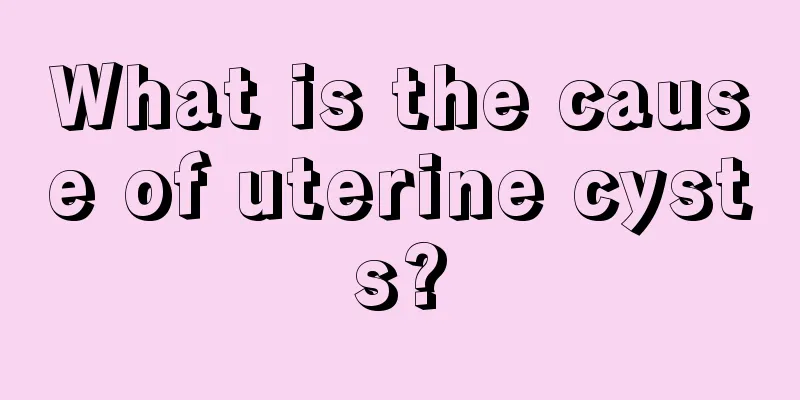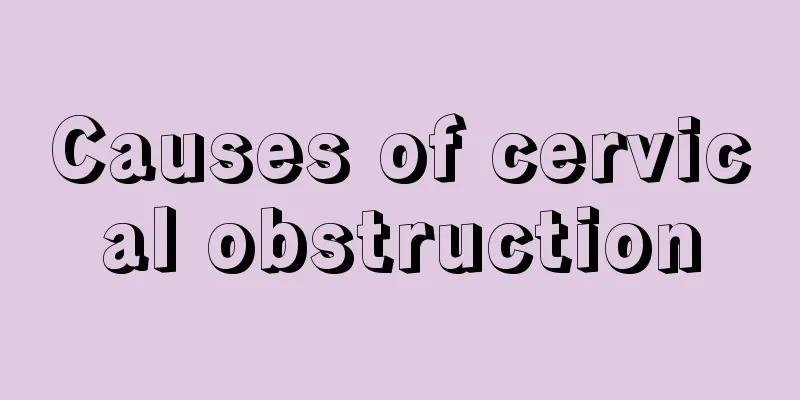What is the cause of uterine cysts?

|
Uterine cyst is one of the gynecological diseases with a relatively high incidence rate, and many women are troubled by it. Uterine cysts are more likely to occur during the reproductive period, and women of any age may suffer from uterine cysts. Moreover, the most common uterine cyst is ovarian cyst. So what factors cause uterine cysts? Next we will introduce the causes of uterine cysts. 1. During the period of Qi and blood stagnation or after childbirth, cold will cause blood stasis. Or it may be caused by internal injury of emotions, depression that damages the liver, poor circulation of Qi, stagnation of Qi and blood, and stagnation of Qi and blood. If the blood stasis lasts for a long time, it will turn into cancer. Except for a lump in the lower abdomen, there are generally no obvious symptoms or only petechiae on the tongue. If it is malignant, the lower abdominal mass will be hard and fixed, painful and resistant to pressure, the skin will be dry and the face will be purple, and there will be petechiae on the tongue. Patients in the late stage of malignancy may have ascites, emaciated body, fatigue and other symptoms. 2. Phlegm and blood stasis condense, worry and sadness, phlegm caused by deficiency, phlegm and fluid stagnate and block the Qi flow, causing Qi stagnation and blood stasis, and phlegm and blood stasis forming lumps. Long-term accumulation of phlegm and blood stasis can also lead to cancer. In addition to the above-mentioned symptoms of Qi and blood stagnation, patients often have symptoms such as fullness in the stomach, palpitations, shortness of breath, poor appetite, edema, muscle stiffness, nausea, increased abdominal circumference, menstrual disorders, difficulty urinating, urgent or difficult bowel movements, distension in the lower abdomen or pits, and a feeling of falling. 1. Clinical manifestations: Some organs adjacent to the ovary are compressed by the cyst, resulting in bladder irritation symptoms such as frequent urination, urgent urination, and painful urination; irregular menstruation, red and white vaginal discharge or infertility after a long marriage, or clinical symptoms of the cardiovascular system such as palpitations, shortness of breath, edema, anemia, and fatigue; lower abdominal pain, breast swelling, back pain, etc. 2. Gynecological examination: pregnancy test, full gastrointestinal fluoroscopy, salpingography, intravenous pyelography, abdominal puncture and laparoscopy, such as B-ultrasound, CT, MRI, blood CA125, CEA, AEP to further clarify the diagnosis and symptomatic treatment. If a woman has the above clinical symptoms, she should pay close attention and actively seek examination and treatment to prevent uterine adnexal cysts from affecting fertility. The above article introduces some possible causes of uterine cysts. After understanding these causes, we can learn how to prevent and treat them. The treatment methods are different for different causes and different for different degrees of illness. Therefore, when we feel unwell, we should go to the hospital for examination and treatment as soon as possible so as not to delay the treatment. |
<<: What is the best time for moderate treatment of cervical erosion?
>>: What should I do if I have uterine cysts during pregnancy?
Recommend
What comes out after the medication is inserted?
Gynecological inflammation is a disease that ever...
How many days does bleeding usually last in early pregnancy?
Under normal circumstances, a woman's menstru...
How to treat endocrine disorders for female friends
Endocrine disorders are a major concern for many ...
What should pregnant women pay attention to when prolactin is high
Prolactin is a hormone secreted during pregnancy....
Why does iced tea make you thirstier the more you drink it? Can you still drink iced tea that has been left overnight?
Iced black tea has the functions and effects of p...
How to use baking soda to clean vagina
In our daily life, many women are always troubled...
What are the 5 signs of a woman's kidney failure?
The kidneys are very important detoxification org...
What happens when you wash your vulva with vinegar?
Women's vulva is exposed, so they need to pay...
Why didn't the heroine of Crash Landing on You call her family? Can North and South Korea communicate on the phone?
Many people wonder why the rich second-generation...
Pregnancy and intercourse with a small amount of blood
If a woman wants to have sex during pregnancy, sh...
When does a woman go through menopause?
Many women use various drugs to postpone their me...
Helicobacter pylori: Small bacteria, big threat, how much do you know?
Author: Fan Ruirui, PhD, Xiang'an Hospital Af...
What is the difference between white chocolate and dark chocolate? What are the functions of white chocolate?
White chocolate is chocolate without cocoa powder...
No more than 5 grams of salt per person per day
# Thousands of IPs Create Science Popularization ...









